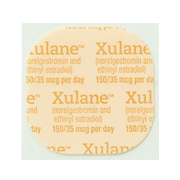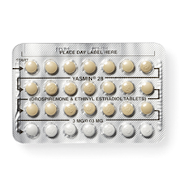How to get a prescription filled
Ready to pick up your birth control? Here’s what you need to know before you go.

We love that you’re taking charge of your life and getting a prescription filled, but we know it can be a little confusing your first time. Here are the basics:
Your health care provider (doctor, nurse, or clinic counselor) will give you a slip of paper (the prescription or script) that includes your name, the medicine, and dosage amount she is prescribing for you. Your provider should ask if you are taking any other drugs or medicines—including vitamins and herbal supplements. If she forgets, make sure you mention them. (Sometimes medicines can interact with each other in unexpected ways.)
Your provider can call your prescription into a pharmacy for you to pick up, or you can take it yourself to a drug store that’s convenient to your home, school, or job. Depending where you live, you may also be able to get a prescription online without leaving your house.
Some clinics, including many Planned Parenthood locations, have generic birth control pills on hand. They can immediately fill your prescription right there so you won’t need to go to a pharmacy.
Big chain pharmacies like CVS, Rite-Aid, and Walgreens—and superstores like Walmart and Target—keep electronic records that can be accessed at any of their stores. That means you can get nail polish, laundry detergent, gum, and your prescription—and you can go to any of their locations. This is great if you go to school away from home, travel a lot, or forget your birth control when you’re out of town. Keep in mind that these stores probably have longer hours than the pharmacies, so check to find out when the pharmacy is open.
The price of prescription medicine depends on two factors: whether you have health insurance or not and whether the drug is a brand name or generic version.
Because of the Affordable Care Act, if you have insurance*, all FDA-approved prescription birth control methods should be covered by your plan with no out-of-pocket costs. There is one exception: sometimes brand names won’t be fully covered if they have a generic equivalent. For methods like the patch or the ring, there is only one brand and insurance providers are required to cover it in full. The pill on the other hand has many different brands and many generic options.
If you find you’re being charged a copay for your pill, it could be because there’s a generic version available. If you think you have been charged when you shouldn’t have been, there are a few simple steps to make sure everything is in order.
A note about switching to generics: they’re just as effective as name-brand versions and sometimes switching is a breeze, but some generics have inactive ingredients or dyes that can cause minor side effects like headaches. If you switch to a generic and have trouble with side effects that don’t go away after a few weeks, ask your provider or pharmacist about other options.
For prescriptions like birth control pills, the patch, or the ring that you use on a regular basis, your provider will write on the prescription that you can get refills. Your provider will usually give you a prescription good for a year at a time, but you’ll need to go the pharmacy each month to pick up your prescription. Some providers will write prescriptions for 3 months of refills or more, meaning fewer trips to the pharmacy. Talk to your provider to see if this could be an option for you.
Once you’ve had a pharmacy fill your prescription, you’ll be able to get refills by calling the pharmacy and giving them your name or the prescription number (all of which will be printed on the pill packet label). Don’t forget to call several hours or a day in advance of when you want to pick up your birth control. And don’t let your supply run out! Not taking your birth control for a couple days can lead to an unplanned pregnancy.
A few more tips:
Don’t feel like going out to get your prescription? Many insurers partner with companies that can mail your prescriptions directly to your home. Caremark and Express Scripts are among the companies that do this. Depending where you live, there are several other services that will deliver birth control right to your door.
In addition, some workplaces allow you to set aside part of your pay before taxes for health care expenses. That saves you money because the IRS won’t touch the part of your paycheck that you spend on meds. Ask your HR department or office manager about medical expense flexible spending accounts (FSA for short).
If you’re still having trouble paying for prescriptions, a group called Partnership for Prescription Assistance helps people without insurance get their medicine for no or little cost. Contact them at 1-888-4-PPA-NOW (1-888-477-2669) or online at www.pparx.org.
P.S. Want to save time and money? Ask your provider about long-acting birth control like an IUD or the implant. These methods last for years and should be totally covered if you have health insurance. (If you don’t have insurance you may be able to get them for free or at reduced cost—and even at full-price they’re money-savers in the long-run.) If you’re ready to get pregnant, you can stop using them and likely be able to get pregnant within a few months.
*Some low-cost clinics don’t accept health insurance. If you do have insurance, you may pay less for care and birth control by going to a gynecologist in private practice.
How do you feel about this article?

Heat up your weekends with our best sex tips and so much more.


